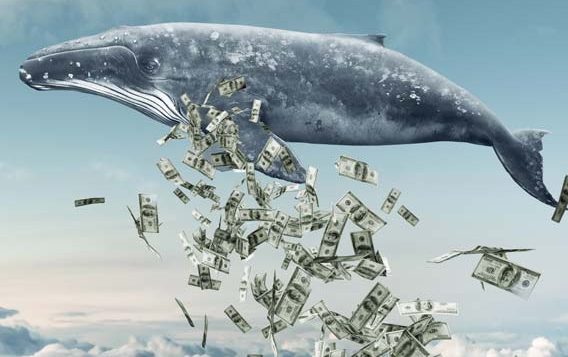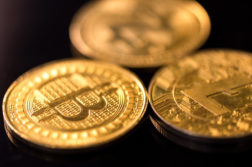The term ‘whale’ refers to an investor with deep pockets who can move the market by buying or selling in large volumes. Given the relatively modest market caps of crypto assets compared to other sectors, the movements of crypto whales can provide important price signals to alert investors
In light of the relatively small size of the crypto asset market, with a total market capitalization of around $350 billion, a few well-heeled investors do have the ability to affect the price of bitcoin and other digital assets drastically. Hence, it is essential to be aware of bitcoin whales and how they might impact the crypto asset market.
Who are the ‘Bitcoin Whales’?
Bitcoin whales are most commonly early bitcoin adopters who are sitting on millions in cryptocurrency. Whales can also be risk-loving high-net-worth individuals who have recently discovered the cryptocurrency market as a new arena for money making, or major institutional investors such as hedge funds and proprietary trading desks who are placing large bets on where the market will move next.
Interestingly, only around 1,000 people own 40 percent of all existing bitcoin, which means that there are a few whales in a big ocean of little fish. It also means that if some of these whales start to sell large chunks of their bitcoin holdings, the market is in for an ugly ride.
A recent example is the Mt. Gox bankruptcy trustee Nobuaki Kobayashi. Although he did not come to possess large bitcoin holdings through the traditional route, Mr Kobayashi is a whale nonetheless. He recently sold off 36,000 BTC in five lots between December 2017 and February this year — and as can be seen in the chart below, those transactions directly correlate with drops in the price of bitcoin (white asterisk).
How do whales trade bitcoin?
Initially, bitcoin whales traded on the largest and most liquid bitcoin exchanges, and some still do. However, as the digital asset market has matured, more and more OTC brokers have launched to service large bitcoin investors who are trading digital currencies over the counter to preserve their anonymity and to be able to access more liquidity than exchanges can provide.
OTC brokers such as Cumberland and Circle have a minimum ticket size of $100,000 and $250,000 for digital currency trades, which means that wealthy bitcoin holders can trade amongst each other without trades ever actually touching exchanges. In some cases, OTC brokers will source liquidity from different exchanges to close out trades and reduce the impact of a large sell or buy transaction on the overall market.
Whales in the altcoin market
Where the impact of whales can be felt the most is in the altcoin market. In crypto assets with market capitalizations of less than $100 million, the market will move substantially if a significant holder decides to sell part of their portfolio, or if a large buyer comes in.
Therefore, it is important to be aware of the wealth distribution of smaller altcoins before you invest in them and to keep a close eye on order books to see whether there are any whales.
How to identify whales in action?
While “whale watching” has become more difficult due to the increase in OTC brokers who now handle a substantial volume of digital asset trades, whale watching is still not a bad idea if you have substantial amounts invested in crypto assets as these investors have the potential to affect the value of your portfolio.
To identify whales, the first thing you can do is monitor the wallet addresses of the largest holders — as well as exchange wallets — to stay alert of any significant shifts in cryptocurrency.

Richest bitcoin addresses — Source: Bitinfocharts.com
When wealthy bitcoin investor Roger Ver sent 25,000 BTC (worth $159 million) to Bitfinex on November 12, 2017, many investors were spooked, fearing that he was about to sell this holding. While $159 million may not sound like much when trading blue-chip stocks, in a market with a capitalization of $100 billion (at the time), selling $159 million worth of bitcoin in one go would have driven the price down. The market corrected that day in anticipation of this possible sell trade.
Alternatively, you can also spot whales in action is by monitoring order books. If you suddenly witness larger-than-normal buy orders, there may be a whale in play. The same, of course, goes for larger-than-usual sell orders. However, when it comes to so-called buy walls and sell walls, it is important to note that they can also be a form of market manipulation if the investors cancel the orders shortly after having given the market the impression a large buyer or seller was in play.
You can also detect whales if there is a change in market capitalization in a particular cryptocurrency that is not tied to any major project announcement or market-moving news. The same goes for a seemingly unexplainable increase in volatility or price spikes in a specific coin. This could mean that a whale has entered this market.
While some members of the cryptocurrency community like to demonize whales as culprits of major price drops and market manipulation, the reality is that in all financial markets there are whales that can influence the price. The “London whale” showed us that in 2012.
As more institutional investors enter the crypto asset market, the number of whales will increase and larger order sizes, as well as trading volumes, will become the norm as the asset class matures to accommodate the new players.
Read more at: Brave New Coin








